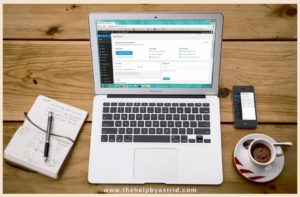
First, the schools closed. Then the malls shut down. Then employers everywhere asked their workers to adapt “flexible work arrangements” where possible. That means, working from home. For many who are working in the gig economy, this arrangement is not new. But there is a surprising number of people who are dealing with this work from home situation for the first time.
Working from home affords us some degree of flexibility and control over our work schedule. It also presents tons of distractions in the form of chores, kids, pets, or meal preparations (especially if you love to cook). Some of the challenges that affect productivity when working from home include having less accountability and limited communication compared to working from the office. However, it is easier for people who are working from home to get into deep work (which is the ability to focus without distraction on a cognitively demanding task). Here are some tips to hack your productivity while working from home.
Have a dedicated workspace:
Sure, your kitchen table can work in a pinch. But it takes time to clear up your “office” each and every mealtime. So, it’s better to have a dedicated workspace. Ideally, this space should be free of distractions. The three biggest temptations are: the bed, the fridge, and the tv. Stay away from them.
Get yourself some organizers:
Make sure that your office is free of clutter. Clutter is visual noise. It distracts you and interferes with your focus, thus reducing productivity. So have a place for everything and keep everything in its place. Clear your desk of things that you don’t immediately need, like: copy paper, folders, pins, staplers, staple wires, paperclips, highlighters, magnets, or extra batteries. Only keep your essentials: laptop, headset, charger, favorite pen, and a notepad. You don’t even have to buy organizers. You can repurpose tins, cans, boxes, and trays to use for organizing your office supplies.
Keep a regular schedule:
Working from home gives people a lot of flexibility. However, not sticking to a work schedule is doing yourself a disservice. You might be tempted to do a wash load or clean your bathroom in the middle of the day. If you set a regular work schedule for yourself, you can easily track when your workday ends and your personal time begins. In choosing to block a time for work, consider when your managers and colleagues will be available and what your most productive hours are.
Schedule regular breaks:
To stay productive, you need to take meaningful breaks. Breaks help prevent decision fatigue, restore motivation, increase creativity, and improve learning. They are important to keep a healthy balance and to feel refreshed. Set alarms for regular breaks. You can take a break for meals, coffee, some minor chores, or even go out for a quick walk (while practicing social distancing, of course).
Do you have any expert tips on how to stay productive while working from home? Let us know in the comments. Remember to work smart and be a blessing to someone today. Stay safe and healthy!
Written by Jaie O. TheHelp



